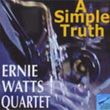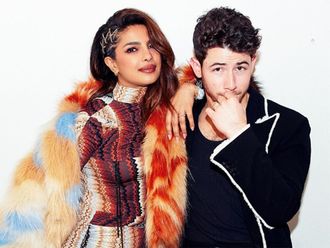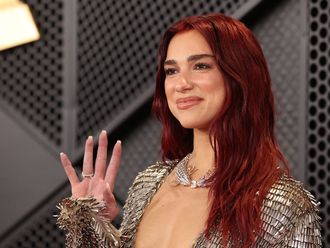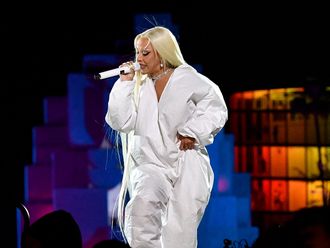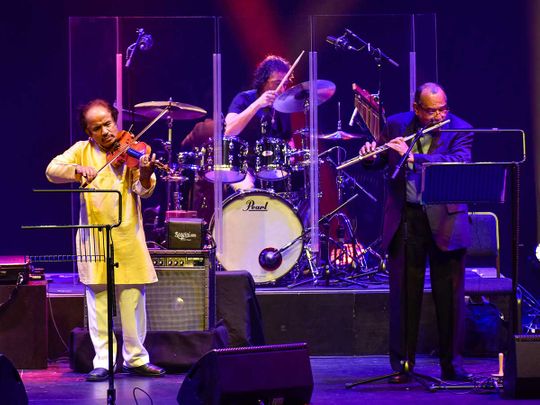
One escaped ethnic massacre in Sri Lanka to train as a doctor — and then give it all up to become the Paganini of Indian violin; the other has become a byword for jazz saxophone from his humble beginnings in Delaware. Life has sometimes been an ode to joy and sometimes a bittersweet symphony for Dr L Subramaniam and Ernie Watts. This is the story of their extra-ordinary journey to artistic glory and global fame, and how music brought them together across continents to Dubai.
Jaffna, 1958
It was getting dark — the sun had set on a suffocating summer day in the emerald island.
Mani and his family tiptoed past swaying sugar-cane bushes and blue plumbago shrubs through sprawling rubber plantations towards the dark belly of the night, where fate awaited.
Jaffna was burning.
Earlier in the day, a mob had chased 11-year-old Mani and his brother on their way home from school. That’s how it always started — the killing spree. Sometimes the mob carried swords, machetes and knives. Sometimes bodies turned to pulp under heavy clubs. Mani and his brother couldn’t see what the weapons of choice were that day. They barely made it home.
A neighbour had warned Mani’s father weeks earlier that it was just a matter of time. But Professor V. Lakshminarayana had refused to believe the city where he taught music would erupt in violence against his family and other ethnic Tamils settled on the island. As deputy principal of Jaffna College and a renowned violinist, he had always seen it as a citadel of peace.
And Mani and his five siblings had got used to the mellifluous music that always filled the family home — their father’s violin, their mother’s voice and their own instruments.
Life was peaceful.
But that fateful day changed it all.
Even as Mani and his brother raced home, news spread swiftly of another massacre in the offing. Mani’s father had had enough — the family left home soon after in whatever clothes they were wearing, on a daring escape from Sri Lanka to the southern Indian city of Chennai.
On that fading night, Mani left behind a rush of memories and things in Jaffna.
But not his violin.
That was the only thing he carried with him back to India.
It would become his life’s biggest healer, and make him Dr Lakshminarayana Subramaniam — the Paginini of Indian Violin and the Emperor of Sound in India.
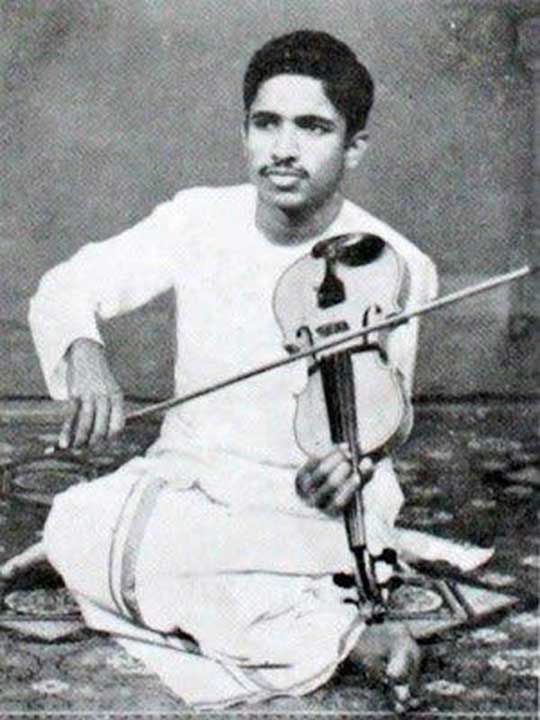
Those fond titles from fellow musicians around the world came over time. But the perilous journey from Jaffna to Chennai would remain in his memory for a long time.
I had started learning vocal music, but then I got diphtheria and it was a very good excuse to switch to the violin.
“After coming back to India, my father wanted us to continue learning music — but at that time violin was just an accompaniment in southern Indian music,” says Dr Subramaniam in an interview with Gulf News. “My father had initially thought it was better if I learnt vocal, although my elder brother was playing excellent violin. So I had started learning vocal music but then I got diphtheria and it was a very good excuse to switch to the violin,” says the maestro with a chuckle.
Thus began a journey that would soon take Dr Subramaniam to the US and the world stage that he would share with the likes of Herbie Hancock, Yehudi Menuhin, Al Jarreau, Ravi Shankar, George Harrison and Stephane Grappelli.
Delaware, 1958
The row house where 13-year-old Ernie Watts lived was like the dozens of others in Wilmington — neat, compact and unabashedly urban.
The only problem was that the neighbours were always too close for comfort.
The neighbor who lived next to Watts’ room was nice, however.
Watts had just brought a saxophone home from high school. He had actually wanted to get a trombone, but since there was none left, they handed him a sax instead. The result: Watts spent all his free time practising music in his bedroom. And the neighbour loved the stuff that Watts played on his saxophone and that permeated the meagre walls into his living room every night.
It was a different kind of jazz.
Not everyone liked it — certainly not Ernie’s mother.
But the neighbor was a fan and lent Ernie a lot of vinyl records. And Ernie loved them. He couldn’t understand the grammar of that music — but he felt it deeply touch his soul.
And then one day he got a sweet surprise.

“My mother bought me my first jazz record — she realised I was always self-motivated. When she realized I wasn’t going to stop playing the saxophone, she joined the Colombia Music Club and bought a record player,” says Watts in an interview with Gulf News.
The first record his mother bought Ernie was Miles Davis — Kind of Blue. And soon came John Coltrane and the floodgates opened.
“I was very influenced by the sound of John Coltrane. I would take my lunch money and every week I would buy a Coltrane record. And every night I had a little stacker on my record player — I’d take three or four Coltrane records and put it on and go to sleep listening to that sound,” he says.
Music was something that I felt in my heart… So I learnt how to play jazz by ear.
That was how Watts began training his mind and his ears and playing singularly complex sounds before he even realized what they were.
“Music was something that I felt in my heart ... So I learnt how to play jazz by ear. I studied classical saxophone but I was simultaneously trying to play the music I was listening to. I trained my ear by playing with some of them — Miles Davis, John Coltrane and all the other great players whose records my neighbour would lend me ... I practiced a lot, I studied a lot. And then I began to play with small groups in local bands – until it evolved. Everything evolves, you know,” says Watts.
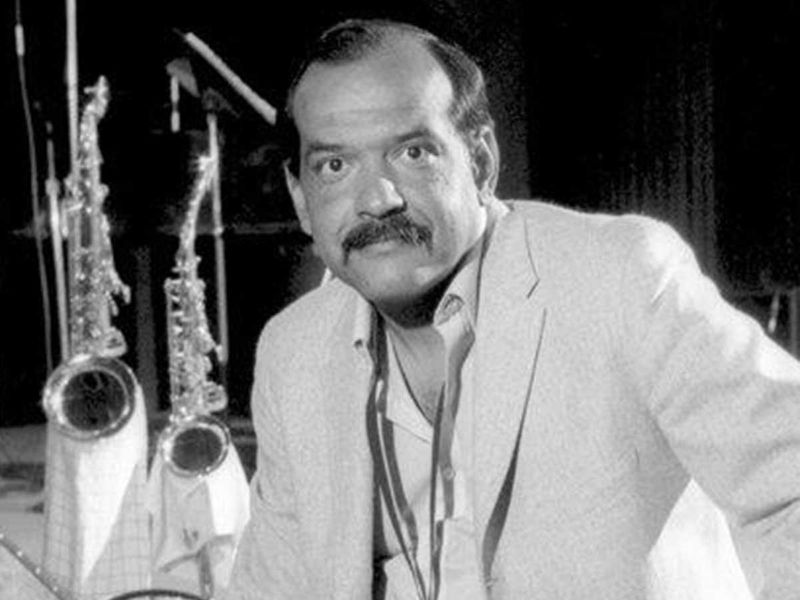
Things indeed did evolve for Ernie Watts.
The pursuit of the saxophone would eventually bring two Grammy awards to his mantelpiece, including one for a unique instrumental take on “Chariots of Fire”.
And a whole history of playing with the Rolling Stones, Marvin Gaye, the Jackson Five (Michael was then a kid!), Frank Sinatra, Barbra Streisand, Neil Diamond, Frank Zappa ...
Chennai, 1968
The Madras Medical College was an imposing Colonial behemoth in the heart of the city, but Lakshminarayana Subramaniam never felt it as a formidable institution. In fact, he always wanted to escape from the drudgery of anatomic explorations to the melodies of his violin.
He was another three years away from completing his medical degree. A doctor would make his family immensely proud and bring along comfortable financial security.
And yet ...
After relocating from Jaffna, it was his father who helped him pursue the violin — even if it meant breaking the taboos of Carnatic music.
“Those days the violin was a side instrument like the sarangi was for vocals. So a violinist was given a very small role in any concert,” recalls Dr Subramaniam. “And if the violinist managed to play very well in a concert, he would not be called back ever again into another one — you lost your profession if you played nice! You could never dare impress your audience more than the main artist. And a violinist’s technique also never developed due to the same reason.”
But his father thought otherwise.
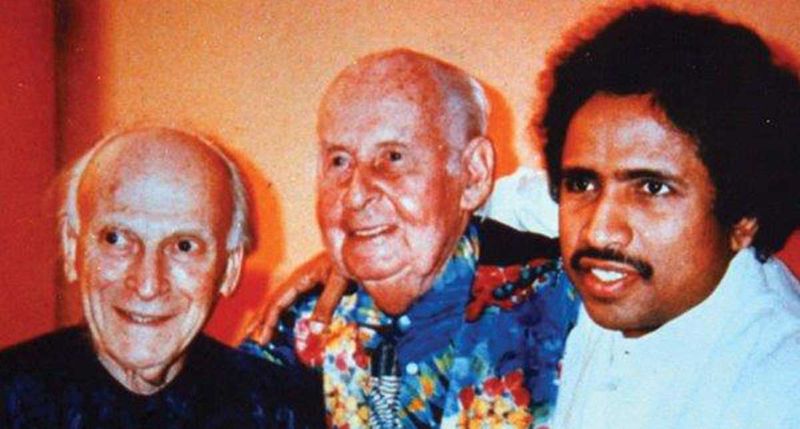
“My father said we should listen to Western violin soloists and great artists,” says Dr Subramaniam. “We should create our own technique and we should become soloists. He taught us a lot of new things — such as smooth sustained notes, long bowing and playing multiple notes. His dream was that we would play solo, not a house concert or as a back-up. He would ask us to listen to Menuhin, Grappelli and major orchestras. That stayed in my mind. And I finally ended up playing with them. A lot of the things that has happened today is because of the vision of my father. I never had that vision,” he says.
By the second year of his medical studies Dr Subramaniam was determined to pursue music as a passion and profession. But it took some convincing by Carnatic music legends Chembai Bhagavatar and Palghat Mani Iyer for him to change course. Chembai warned a young Subramaniam that “it is in music that you will be an emperor, you will not go far in medicine”.
But there was a stumbling block: his mother.
“When I told my mother I would like to study music instead of medicine, she insisted I complete my MBBS degree first and then pursue whatever I wanted,” says Dr Subramaniam. “I pleaded, but she wouldn’t relent.”
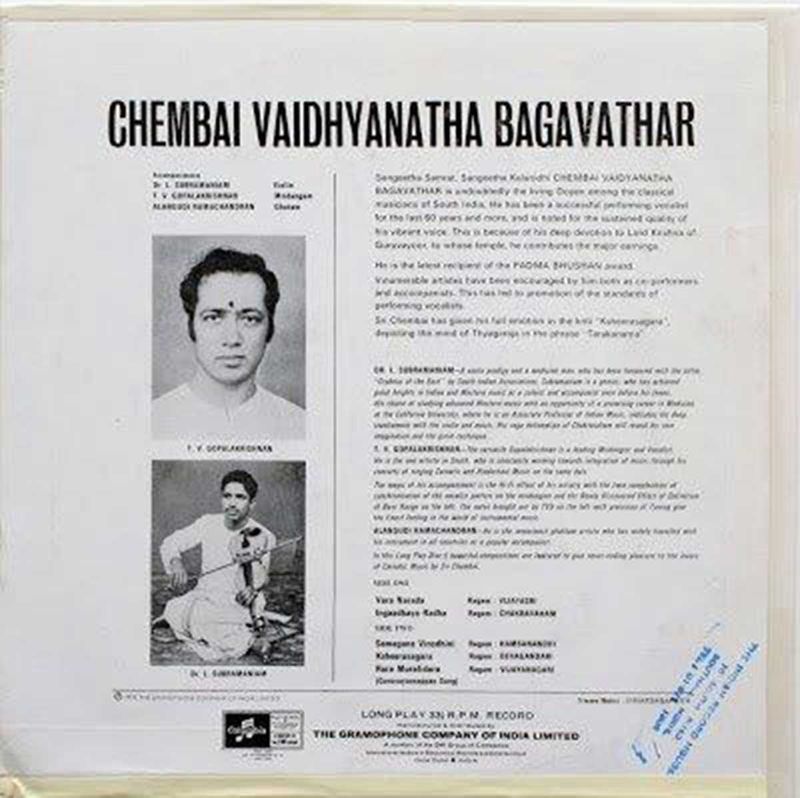
The would-be doctor dragged himself back to the medical college, completing his degree and eventually registering as a general practitioner. In hindsight, he says, completing the medical degree was “the best advice that my mother gave me — it saved my life”.
That graduation degree is what would ultimately make Dr Subramaniam the music legend that he is today.
“When I enrolled at the California Institute of the Arts soon after for a Master’s degree in Western classical music, the first thing that they asked me for was a certificate of my graduation degree. At that moment, I felt immensely grateful to my mother. Without completing my medical degree, I wouldn’t have been able to study music any further,” he says.
And music is how California came calling.
California, 1970s
Richard Bock was used to handling a wide variety of musical eccentrics in town.
His record labels, Pacific Jazz and World Pacific, boasted some of the biggest names in music, straddling the East and West: Gerry Mulligan, Jim Hall, Buddy Rich, Gerald Wilson, the Jazz Crusaders, Ali Akbar Khan and Jean Luc Ponty.
Listeners thanked him for introducing Ravi Shankar’s music to the West.
But he had never heard someone like Dr L Subramaniam.
“I used to do a lot of fusion concerts those days. Richard Bock was interested in both Indian classical and jazz… so he asked me, why don’t you do a fusion project?” says Dr Subramaniam.
“But back then if you were a classical musician in India and you did anything other than classical music, then certain people strongly felt that it was not good. So when Richard requested me to release a record, I said if I do the recording I may not be able to go back to India,” he says.
Bock was well acquainted with the musical reality of India at the time – he was a great devotee of spiritual guru Sathya Sai Baba like Dr Subramaniam and visited India very often.
He offered a solution.

“Richard said we will do a record but make sure it is not distributed in India ... So I wrote for the keyboard, piano, guitar, violin and drums. There used to be an exceptional drummer called Emil Richards ... We had travelled together with George Harrison and Ravi Shankar. So we put together a group and I wrote some music for 40 minutes. We went to the studio and recorded the album. Then I told my father I have done this, and we all forgot about it,” says Dr Subramaniam.
Six months later, when he was midway through an Indian classical tour in France, his father called.
“My father told me: Your album has been selected as one of the Top 10 albums in Los Angeles Times by [composer and legendary music critic] Leonard Feather. Your name is on the same list as Herbie Hancock!,” says Dr Subramaniam. “I said I don’t know what it is I have done, but I certainly didn’t play jazz! Richard then told me I had to give him five more albums with the same conditions — they won’t be released in India.”
I said I don’t know what it is I have done, but I certainly didn’t play jazz!
And that’s how Dr Subramaniam started on a musical quest that continues to this day: a confluence of the sounds of East and West. The twain were never ordained to meet, as Rudyard Kipling wrote, but they did yield to the maestro’s violin!
“I did one project with Herbie Hancock. I invited George Duke and Stanley Clarke for another album. One album was with Stephane Grappelli, and then with Jean-Luc Ponty, Billy Cobham… The direction of my musical journey was not planned. And then when people heard these albums in India, I got offers to play. The Jazz Yatra in Mumbai asked me to come and play. It got a fantastic response and I travelled around India with Grappelli and [jazz guitar legend] Larry Coryell. The success of this tour in a way opened the market for next generation of fusion music in India and it became a successful genre,” he says.
While based in Los Angeles, he married Vijayashree, the daughter of renowned south Indian singer Lakshmi Shankar. Even as Dr Subramaniam’s hectic recordings and tours kept him busy in California, in another quiet corner of the city, a new member of the Buddy Rich Band was warming up to the musical scene of Los Angeles.
His name was Ernie Watts.
Mumbai, 1988
For a musical pair who would both collectively and individually flourish on fusion, Ernie Watts and Dr Subramaniam first collaborated over music against a Bollywood backdrop.
Mira Nair’s Salaam Bombay hit the stilted world of Bollywood like a radical revolution. Chronicling the daily life of slum children in what was then called Bombay, the film went on to garner a wealth of awards at film festivals around the world: Cannes, Montréal, India’s National Awards and an Oscar nomination.
It was Dr Subramaniam who wrote the music for the film (and would go on to score another of Nair’s acclaimed film, Mississippi Masala).
And it also marked his first collaboration with Ernie Watts. “That was the first time we met. Dr Subramaniam was writing the music for the film and he called me to play on that,” says Watts. “And then we started playing together from time to time.”
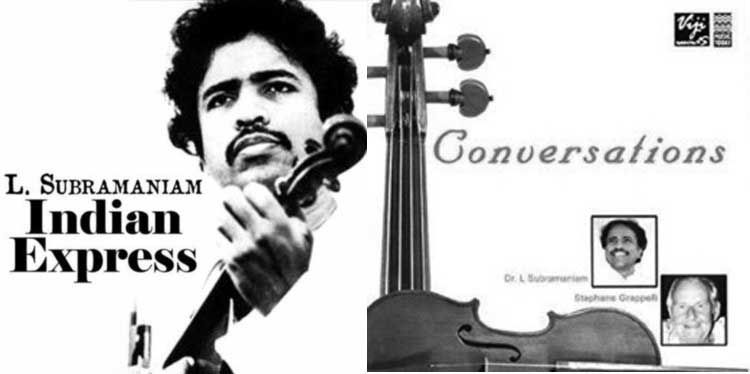
Those collaborations with Watts and other music stalwarts sealed Dr Subramaniam’s reputation not only as a legendary violinist from the south Indian Carnatic tradition, but also as someone equally at ease playing the instrument in the Western style, apart from being a conductor and composer who dabbled into films and performed as a solo violinist in Bernardo Bertolucci’s Little Buddha. His soaring musical career saw him produce and perform music both exotic and sublime: such as A Fantasy on Vedic Chants with the New York Philharmonic, conducted by Zubin Mehta.
All that, while staying true to his roots and tradition: classical Carnatic collaborations continued with legends such as Ustad Bismillah Khan, Ustad Ali Akbar Khan and Pandit Jasraj.
Dubai, 2019
The first thing that Dr Subramaniam and Watts do when they meet at their Dubai hotel is to embrace in a warm hug.
It’s been a while since they last met.
Watts has just arrived in Dubai after a near 16-hour flight. They will rehearse soon for a spectacular night of fusion music the next day – as part of the eighth season of Emirates NBD Classics at the Dubai Opera.
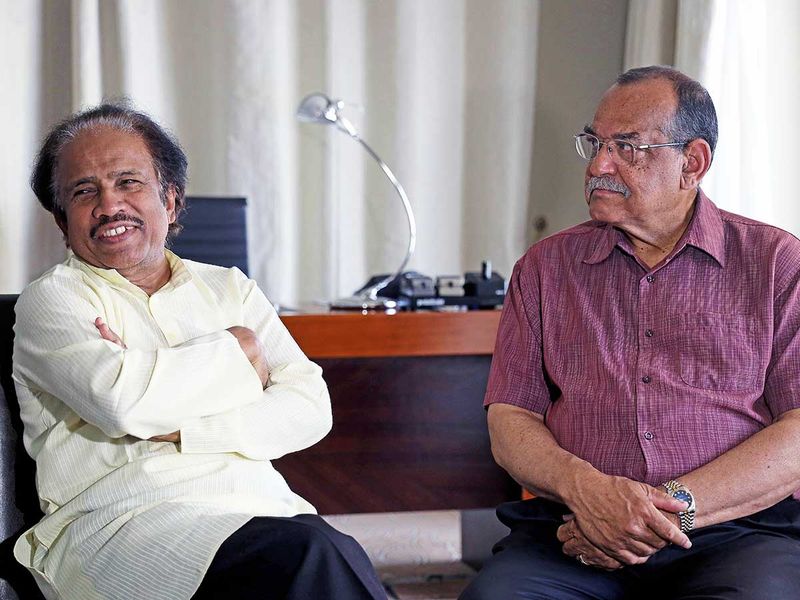
The brilliant vista of the Dubai skyline is on full display from the 57th floor of their hotel suite on Shaikh Zayed Road – and it’s the striking Arabic calligraphy of the upcoming Museum of the Future in the Dubai International Financial Centre district that Watts finds fascinating.
Dr Subramaniam meanwhile is still amazed over a session of training that he gave that morning to young children of Malhaar – a music school in Dubai – and the response that he got. He discusses it animatedly with Amit Pateria, the man who’s responsible for bringing him and Ernie Watts to Dubai for the concert (and many more classical music legends to the city over the years) – a Richard Bock of Dubai if you will. But that’s another story.
Maintaining success is a bigger task. Every concert is a challenge – every time you have to rediscover yourself.
From the streets of Jaffna and Wilmington to the pinnacle of their musical prowess, it’s been a long journey for both stalwarts.
What has been the most challenging part, I ask.
“The most difficult part of me growing and evolving as a musician was not getting distracted,” Watts takes off. “In the music business there are so many distractions... How about that car? How about that house? How about a pool in the house? Those kind of things. The distractions of this physical world. We live in the world of stuff. We are surrounded by things and the need of things. And so we get distracted from our original path by the pursuit of things. I always believed that if you stay on the path and study and focus and practice then everything will work out,” he says.
“Staying alive,” quips Dr Subramaniam.
Staying alive has been on the agenda for both.
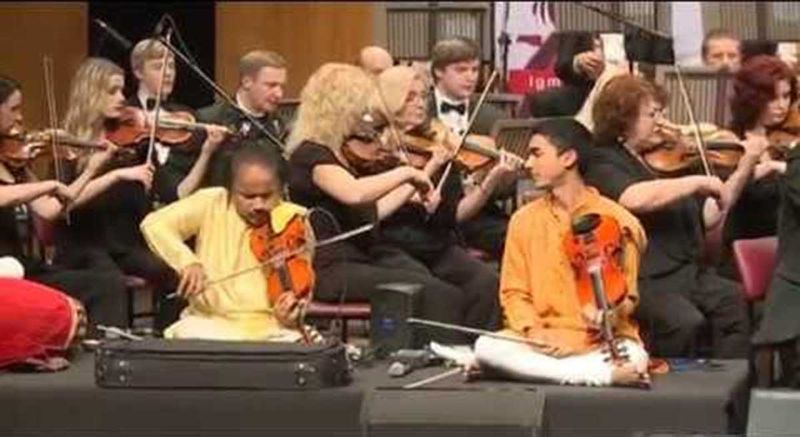
In the intervening years, Dr Subramaniam has scaled new heights with a Grammy nomination, set up a global music festival in the memory of his father and coped with a crippling personal loss: Vijayashree or Viji passed away in 1995 after a battle with cancer. Kavita Krishnamurthy – a doyen of Indian classical and playback music whom Dr Subramaniam met and married in 1999 – has helped him immensely with getting back on track.
Indeed, every personal tragedy for Dr Subramaniam has inevitably paved the way for musical triumph.
His mother’s death came out of the blue – when the maestro was in Los Angeles as musical adviser for Peter Brook’s Mahabharata. The solemnity and grief of those moments crystalised into “Fantasy on Vedic Chants” — a masterpiece of microtone that changed the dynamics of Indian and western orchestral compositions. His father’s death led Dr Subramaniam to give up music for a year. He began composing a requiem — that he would only complete after the passing away of Viji. That haunting masterpiece premiered as “Global Symphony” in New York, playing with a full orchestra at the United Nations.
With his children now routinely performing with their father (son Ambi is a violinist and daughter Bindu is a vocalist), grand-daughter and singing prodigy Mahati has further burnished the credential of the Subramaniams as the first family of music in India.
The years have been busy too for Ernie Watts.
From his days as a member of the “Tonight Show” band to redefining a solo career in a mainstream acoustic jazz and playing with his quartet, Watts has travelled all over the world with his projects – increasingly focusing on the saxophone and the kind of music that he grew up with. In awarding him the prestigious Frankfurt Music Prize in 2014, the jury paid tribute to an “extraordinary career” which has “generated an impressive artistic legacy”.
When you are playing music, you can’t do anything else. When we play music, we don’t play music – we become music. Music plays us.
Since fusion is also on the agenda and that seems to be the buzzword for every musician with a microphone, I decide to stick my neck out: what separates fusion from confusion?
“If you are very sure about what you are doing and if it has a scientific background, then there’s absolutely no confusion with fusion,” says Dr Subramaniam. “Even in the 1970s, there were great jazz artists who started genres such as jazz-pop and jazz-rock. All that they were trying to do was reach out to bigger mass audiences. Musicians like John Coltrane created a lot of new things — like a trend of set of notes for different harmony – but it had limited audiences. The danger is if you are not familiar with Western harmony or Indian music and then somebody just says that we will start together and end together — that is not music, that is confusion,” he says.
“Confusion is when everyone doesn’t have the same concept, when you don’t have an agreement at the beginning,” says Watts. “If you have an agreement of the path at the beginning, then the structure comes through that.”
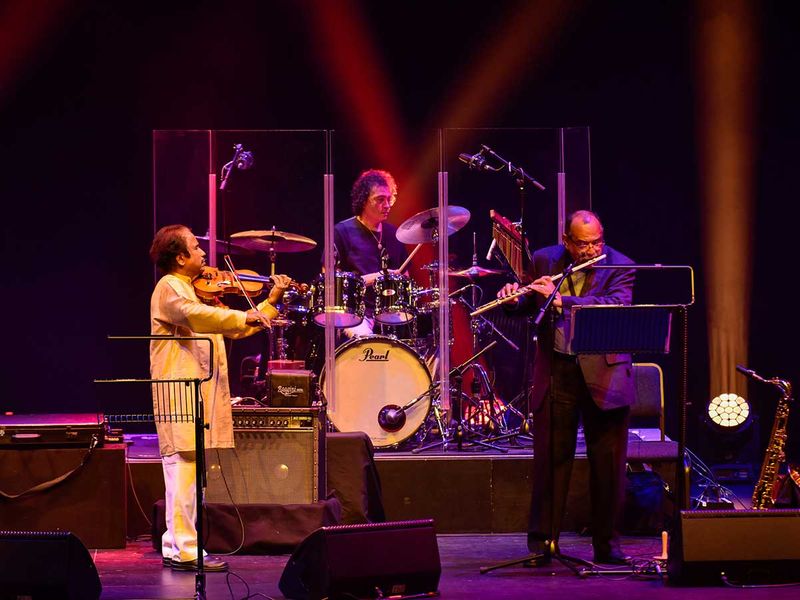
So how about the music they play – what does it mean to them today?
“When you are playing music, you can’t do anything else. When we play music, we don’t play music – we become music. Music plays us,” says Watts.
For Dr Subramaniam, life is music. “From my young days being surrounded by my father to other great artists, I can’t imagine a day without my violin. That’s why I always say I am a zero without my violin,” he says.
The interview lasts far longer than any of us had expected – evening descends on Dubai.
It gets dark – but this is not the terrifying abyss of Jaffna. Nobody lurks in the shadows.
This is the magical moment where dreams are woven and conversations flourish.
It’s time for a quick rehearsal for the performance the next day and other stalwart musicians troop in: Pandit Tanmay Bose, Raju Kulkarni, Atul Raninga, Sathya Sai, DSR Murthy ...
As we leave, the strains of Dr Subramaniam’s magical composition Grasshopper fill the air: he and Ernie Watts resume their concert with the symphony called life.
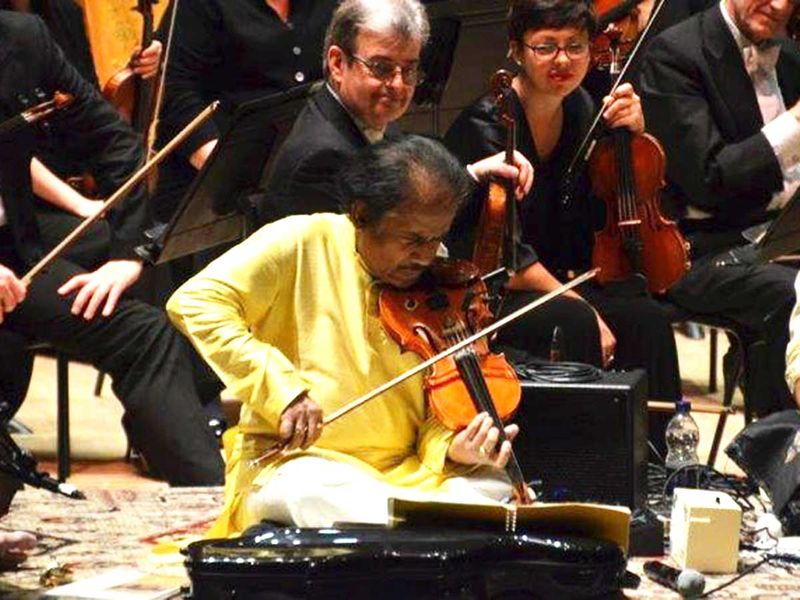
TAKE 5: Dr L Subramaniam and Ernie Watts
1. ON THE APPROACH TO MUSIC: EAST VS WEST
Dr L Subramaniam: “In Indian music even today, the teacher doesn’t like to you to write down the note and look at it while playing. They very pointedly focus on ear training though you are taught scales and compositions and rhythmic cycles… We always tell students that don’t look at the music and learn – hear it and learn. That has been the tradition all along.
“In the West, children get used to looking at the notes and playing. Sometimes some of the great Western classical players who have played a Beethoven symphony 200 times suddenly feel lost when the musical notes are not in front of them… They just can’t play! Whereas for jazz players, they learn the music by listening to and feeling it.”
2. WHEN A VIOLIN LEGEND COULDN’T FIND A CONCERT SEAT
Dr L Subramaniam: “[Jazz violin legend] Stephen Grappelli came to the green room of one of my concerts in France. I opened the door and suddenly I found myself facing one of the greatest violinists of all time. I was shocked to see him. I said: ‘Sir, come in.’
“He said: ‘No, I had just come to say hello. There are no tickets for your concert.’
Here is what happened after that:
3. WHAT’S THE BEST VENUE YOU HAVE PLAYED IN?
Ernie Watts: “Every time I play, it’s another world. It can be Carnegie Hall, or somebody’s living room or a little club. It’s not the place, it’s the opportunity to create something beautiful with your friends.”
Dr L Subramaniam: “Every concert is unique. There are places where you feel very happy. You forget everything and feel the focus of the audience.”
4. WHAT’S THE ONE THING YOU CAN’T DO WITHOUT?
Ernie Watts: “Peace and quiet.”
Dr L Subramaniam: “My computer. I write a lot of music and without it I can’t function.”
5. WHAT’S YOUR FAVOURITE FOOD?
Dr L Subramaniam: “We were from a low middle class family initially. We had simple south Indian vegetarian food. But since I have to travel around the world, I do try to enjoy everything – vegetarian pizza, vegetarian Chinese, any vegetarian food.”
Ernie Watts: “I just love food. I tell people if they can’t get it away, I’ll eat it.”
Year of Tolerance in UAE: “Music is the only solution to intolerance”
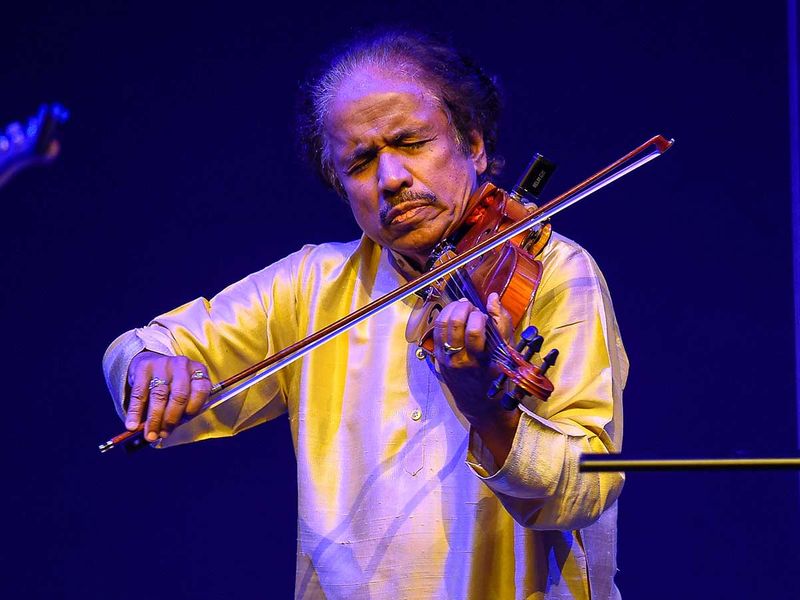
As the UAE celebrates 2019 as the Year of Tolerance, one of the world’s greatest violinists says that music is the only way to promote peace and fight intolerance around the world – and his own life lessons have proven so.
“You cannot create peace without music,” Dr L Subramaniam told Gulf News.
Dr Subramaniam, also an acclaimed Indian composer, is renowned for collaborations with top-class world musicians – such as a landmark concert he played with fellow violin legend Yehudi Menuhin for the 40th anniversary of the United Nations. “At that time, India and some countries were not very friendly with each other,” he recalled. “Some of the ambassadors at the UN were not on talking terms with each other, but they were all sitting there for the concert. All of a sudden at that period they all forgot the old things — they all looked at each other and laughed. They completely forgot that they perhaps should not do that — I’m from this country and I shouldn’t smile at that ambassador!”
A similar experience awaited Dr Subramaniam in Russia. “When we went to Russia, I was living in the US. At that time they asked me to participate in a major theatre at the Bolshoi Theatre. They wanted me to perform with a group and I selected some great musicians from the US and India. Initially the objection [from the Russians] was that why do you need musicians to come from the US?,” he said.
“So I said why do you need American musicians at all? The music that we would play, these are the people very familiar with it and so they would do a better job and the result will be better creativity ... Some of the Russian musicians were also very happy to play with us and American musicians because they never got the opportunity at that time to travel and play to the world. At the end of it many of them were literally in tears — both Americans and Russians.”
According to Dr Subramaniam: “The culture of music breaks down all barriers and promotes peace. Like the UAE, every country should promote cultural exchanges and performances which bring peace to our universe… Because musicians can bring in peace and understanding. Music is the only solution to intolerance.”


